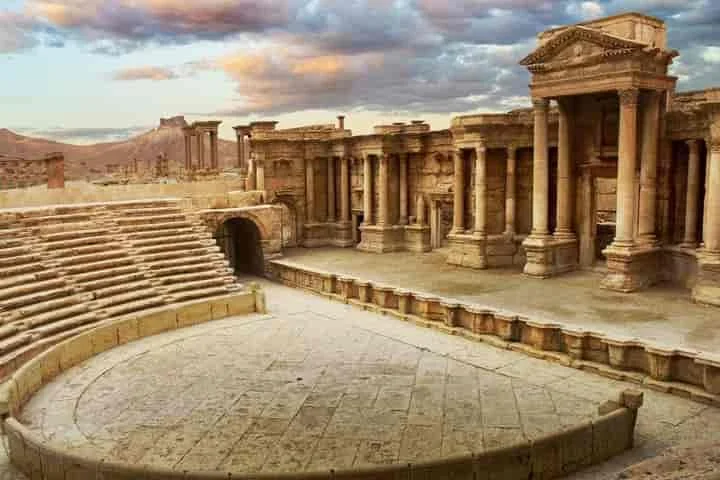The impressive and imposing ancient city of Palmyra which is situated in present-day Syria had an intriguing aspect which had been perplexing historians, archaeologists and scientists alike for a very long time. This was an unknown god mentioned in the inscriptions about whose identity nothing was known.
As per a report in sciencealert.com, this puzzle no longer continues as a researcher has claimed that she has solved the mystery.
This ancient city was a flourishing megapolis some 2,000 years ago and it was in existence for more than 1,000 years. It gained importance as a trade centre that acted as a bridge between the Roman Empire and the Asian trade routes like the Silk Road.
The Palmyra inscriptions refer to a deity who is anonymous. These engravings, which are in 3,000 years old Aramaic language, mention this divine figure as “merciful”, "he whose name is blessed forever” and "lord of the universe" as per news site Science in Poland, which is run by the Polish Government and independent journalists.
What is significant is that several of these engravings are 2,000 years old.
The researcher who solved the mystery – Aleksandra Kubiak-Schneider – in order to unravel the deity’s identity, juxtaposed the Palmyra inscriptions with those found in the entire Mesopotamia dating back to the first millennium BC. During the comparison she found that the divine figures who were revered and worshipped in Mesopotamia were also called with names similar to that with which the unknown god from Palmyra was.

Kubiak-Schneider is a postdoctoral researcher at Poland’s University of Wrocław.
Talking to Science in Poland, Kubiak-Schneider said that the Babylonian supreme god “Bel-Marduk” was also called “merciful”. Likewise, Baalshamin, who is a sky god was referred to as “lord of the world”, a title which is quite similar to “lord of the universe”.
Sharing more details with Science, Kubiak-Schneider pointed out that the anonymous "god" talked about in the inscriptions of Palmyra is not a single god. It was referring to several deities including Bel-Marduk and Baalshamin.
According to her, those ancient worshippers did not mention the deities’ names as a sign of respect. Further, she added that while engraving those inscriptions which were seeking blessings and intervention from the divine, people did not reach or approach a specific god but any god who would listen to their prayer and bless them.
Remarking on this aspect, Kubiak-Schneider said: "There was no one anonymous god, every god who listened and showed favour to requests deserved an eternal praise.”
Several of the scholars who were not part of this research reacted with care about what Kubiak-Schneider had proposed.
In an email, Leonardo Gregoratti told Live Science that Kubiak-Schneider has "presented [a] hypothesis to the scientific community which will discuss it and each scholar will decide to accept it or reject it presenting [their] counterarguments in the latter case.”
Gregoratti has extensively studied and researched the history and archaeology of Palmyra and also of areas surrounding it.
Another researcher stated that while it may be possible that the unnamed deity refers to many deities, some of the Babylonian texts that had been studied by Kubiak-Schneider were dated before the Palmyra inscriptions.
Also read: 3,400 years old Bronze Age city resurfaces as Tigris river dries up




















